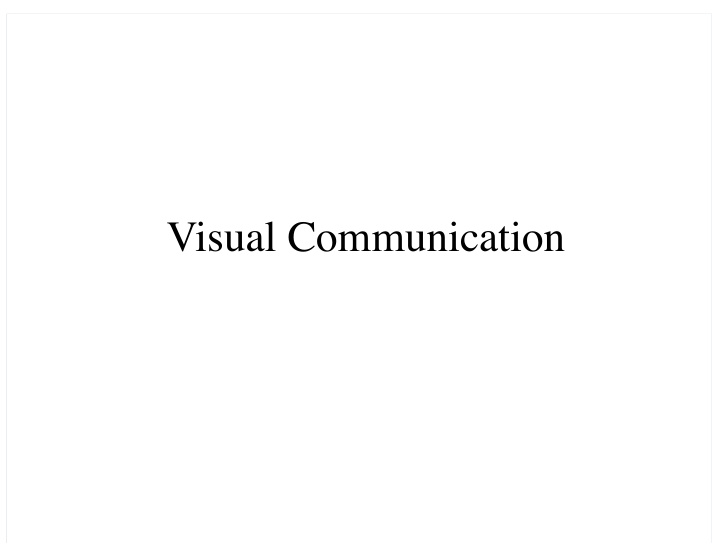



Visual Communication
Serena Williams: Sexist? Racist?
• Questions: • 1) What does visual culture mean to you? • 2) What do you think the concept of the “innocent eye” means? Do you believe that it could actually exist? • 3) What does “representation” mean to you? • 4) What is your understanding of “encoding” and “decoding”? • 5) What does “framing” mean to you and what role does it play in our observation of our surroundings?
• As noted by Harry Jamieson, visual communication is not to be investigated in vacuo and lies along the interface of other discourses including linguistics and cultural studies.
• Although the primary level of perception occurs through the electrical impulses sent from the eyes to the brain upon its exposure to (in)direct light, as noted by Jamieson, there is no such thing as ‘innocent seeing.’
• One of the highlights of the observations made by Jamieson is the active nature of seeing. Whether we are senders or receivers of images, our engagement with them takes place on an active level.
The Role of Illusion: • While at the primary level of communication, distortion can take place, leading to visual illusion, Jamieson notes that illusion is a part and parcel of visual representation.
Some Optical Illusions:
Schroeder Stairs
• While the eyes are at the forefront of filtering stimuli, the role of psychological and cultural factors are not to be dismissed. • Choice has to be made from a range of directional options and ‘bias,’ in its non- pejorative meaning, plays an important role in the process.
Left Hemisphere Right Hemisphere Rational Intuitive Linear Holistic First World Third World Print Orality Isolated Consciousness Simultaneous Awareness Head Heart Visual Tactile (integration of senses; does not involve a single sense) Quantifying Qualifying
Serial and Parallel Processing: • Serial processing is sequential and is found in the left hemisphere. • The right hemisphere operates in a way that can deal simultaneously with concurrent inputs from various senses. Information processing in the right hemisphere takes place at a faster pace.
Rudolf Arnheim (1904 ‒ 2007)
• Synesthesia:
Reading the Signs/Symbols:
• According to art historian, Ernst Gombrich (1909 ‒ 2001), conjecture has an important role in the early stages of perception. Gombrich posits that “without some initial system, without a first guess to which we can stick unless it is disproved, we could indeed make no sense of the milliards of ambiguous stimuli that reach us from the environment.”
• Framing: The eye is naturally given to framing, to seeing things in relationships within frames which we call contexts. While things are presented to us in nature because it is simply there, consciously or subconsciously, the eye seems to be charged with intentions. • While framing becomes important in perception, one should acknowledge that there is no centre/periphery in nature.
• In perception, mapping does not take place upon a tabula rasa, but upon a brain engraved with lines and connections set down in the past, representing the individual’s personal history in the form of memory. And it is through memory that the past is framed.
How (un)coded are pictorial images?
Representation and Media: • https://www.youtube.com/watch? v=aTzMsPqssOY
Recommend
More recommend